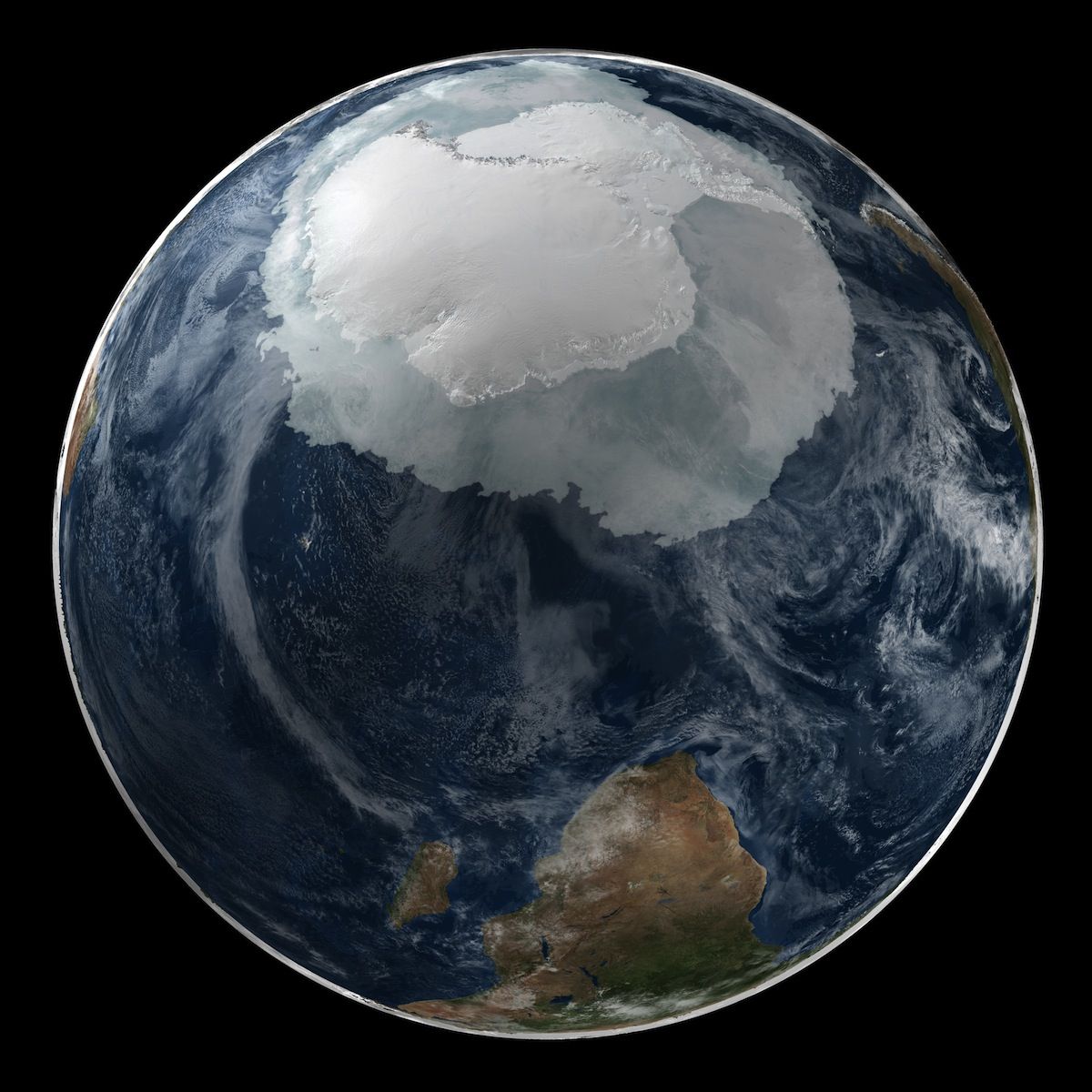5 Myths About Antarctic Melt

News that the catastrophic collapse of the West Antarctic ice sheet is already underway, like other big reports about the southernmost continent, spur chatter and questions about what's really happening at the bottom of the world.
Here, Live Science explains the reality behind some common misconceptions about big changes in Antarctica.
1. Antarctic ice is getting bigger, not shrinking!
Yes, the Antarctic sea ice has been growing larger over the last few decades. But here's what people miss when they raise this point: Sea ice is NOT the same as land ice. When scientists talk about the Antarctic Ice Sheet melting, they're referring to glacial ice on land. And unlike the Arctic ice cap, which persists year-round, in Antarctica, almost all of the sea ice melts in the summer. So having more sea ice does little to boost Antarctica's total ice mass. [Vanishing Glaciers: See Stunning Images of Earth's Melting Ice]
Interestingly, the growing sea ice might be related to the shrinking glaciers. Stronger winds, along with changing ocean temperatures and salinity (salt content) are driving the increase in sea ice, by creating more open areas for ice to form and by reducing melting. The same conditions are also linked to the retreating glaciers. Winds drive an ocean circulation pattern that brings up warm water, which is nibbling away at the glaciers from below.
2. It must be all those volcanoes.
West Antarctica, where the ice is melting fastest, is also home to a number of active volcanoes. Could they be melting the ice, instead of climate change?
Sign up for the Live Science daily newsletter now
Get the world’s most fascinating discoveries delivered straight to your inbox.
Several lines of evidence say the answer is a resounding NO.
First is Iceland. The land mass has many very active volcanoes, but glaciers still cover its surface. And Iceland is just one of several examples showing that fire and ice can coexist at volcanoes without widespread melting occurring. Second, volcanoes called tuyas erupted through ice sheets during past Ice Ages, and there is little evidence they caused rapid, catastrophic melting. Third, the volcanic activity beneath West Antarctica hasn't significantly changed in the past few decades, which is when the glaciers there started their galloping retreat. Finally, a super-eruption the size of Yellowstone's biggest blast would be needed to melt through the miles of ice that cloak the volcanoes, scientists have calculated. [Fire and Ice: Images of Volcano-Ice Encounters]
3. It's all a global warming conspiracy
Forty years of data don't care whether or not some people oppose the 97 percent of scientists who agree that humans are causing global warming. The latest findings from West Antarctica are based on direct observations of retreating glaciers, not computer models or climate projections. The study concludes that West Antarctica's six biggest glaciers are shrinking back into deep valleys with no ridges or mountains to halt the rapid pace. (Here's where a volcano might actually help!) And no amount of global warming or cooling, save a new ice age, will make a dent in the retreat.
4. The Earth will cycle itself into another ice age anyway
Climate scientists also agree the Earth has naturally warmed and cooled throughout its history. These cycles have repeated themselves about every 100,000 years for the last 900,000 years. If the pattern held true again, Earth might already be heading into another ice age, but there's a confounding factor: humans. Greenhouse gases, aerosols (airborne pollution particles) and other changes wrought by humans mean the natural climate cycle can't play out the same as before. Also, carbon dioxide levels are heading toward levels last recorded when the Earth was much warmer, about 3 million years ago, before modern humans evolved. The Earth is not heading into an ice age anytime soon.
5. Ice shrinks when it melts, so ocean levels will go down
The Antarctic Ice Sheet is on land, not floating in the ocean. Actually, it is dipping its toes in the sea, but the majority of the ice is on land. (Antarctica's glaciers end in floating ice shelves that extend into the ocean.)
Thus, the vast majority of the ice is not currently displacing water and will raise sea level when it melts and flows into the ocean. Fascinating side note: Land in West Antarctica is already rising up where the ice cover has retreated. Called glacial rebound, this phenomenon is still taking place in North America, where the land is recovering from the weight of the massive ice sheets that covered the continent during the last ice age.
Email Becky Oskin or follow her @beckyoskin. Follow us @livescience, Facebook & Google+. Original article on Live Science.












